Let’s say you live around Derby and you fancy a summer trip to Berlin (or any other European city really). Perhaps you’re not keen on flying or driving because you worry about the climate crisis. And given where you’re reading this, I assume that cycling is a regular part of your life. I imagine you’re very used to your trusty workhorse. Perhaps you feel painfully slow, or even a little bit lost when you are stranded somewhere without your bike.
So you start wondering. Wouldn’t it be nice if I had my own bike with me on holiday? How would I go about doing that? Is it difficult, or expensive? Is it worth it? Based on recent experience, I will do my best to answer these questions. I will start with a (transport) reasons for taking your bike on holiday, and then explore the Rail/Eurostar option.
Why you should take your bike on holiday.
First of all, how would you feel if your bike went on holiday without you, and you had to spend a week in a shed? Joking aside, the only good reason to take a bike with you on a journey, is, of course, to ride it! If you’re into bikepacking, or following the route of famous bike races, etc., then the reason is obvious. But what about taking your bike for transport? Is there much point? Yes. Yes, there is!
The benefits of having access to a bike at your destination are obvious. You get a fairly large radius for exploring, at no extra cost, virtually no time constraints and all on your own steam. Depending on where you are, you can also experience transport systems organised differently, and enjoy good quality cycling infrastructure.
You might say that there’s no need to take your own bike, because many big cities have rental services. Although this is true, consider the kind of bikes you tend to find. They are heavy and slow. They are not set up for you, especially if you have any special requirements. They don’t have luggage racks. Their range tends to be restricted. And they cost money. In some situations this is all fine of course. For example, if you are in a big city for a weekend and went to just do a few miles around the centre, those rental bikes can be great.
However, if you want to do more than that, you’ve got two options. You can find a specialist rental place, which restricts your pick-up and drop-off location, and can be pricey. Or you bring your own bike.
Bike to Ride
Having your own bike to hand can also come in handy during the journey, especially for the first and last legs. For a start, you can get to Derby train station, without paying or driving.
This works on the other end as well. Perhaps you’ve arrived in Berlin after midnight (maybe you had to take a later train due to poor planning…). You need to get to your accommodation somewhere on the outskirts, but the S-Bahn doesn’t run all the way to your destination, because of rail maintenance works. (Not that it really matters, because you’re too late to make the last connection…)
You could take a very expensive taxi, probably paying both ways. Or you can follow the moon and enjoy a peaceful midnight bike ride to your lodgings. Also it feels really good to stretch your legs a bit after a long train journey.
If you’ve made it this far, you’re hopefully at least curious about taking your bike on a trip. So, what are your options? Given Derby’s good train connections, starting with rail seems obvious
The Rail Option
You can do the whole journey by train, via the Eurostar from St Pancras. (This is what I did last month and this article details some of my views and impressions.) You can get an Interrail Pass (for example, 4 days of unlimited train travel all over Europe) for about the same money as a return flight from East Midlands to Berlin. Your Interrail Pass covers the train from Derby to London and all onward travel on the continent. Generally, this also allows you to use high-speed trains, such as the French TGV, Belgian Thalys or German ICE. On some high-speed routes you are advised to book seats, but they are typically cheap (£6) and this isn’t usually mandatory.
Probably the biggest hurdle is the Eurostar leg of the journey. First you need to get a mandatory seat reservation (€30 each way). They sell out quickly, especially over the summer, so I would recommend booking several months in advance if you can. (Naturally, I didn’t follow my own advice and tried to do everything last minute, which was mildly stressful as I had to re-jig my whole travel plan…)
Secondly, you need to endure the security theatre at the Eurostar terminals (at both St Pancras and Brussels). There you get to enjoy the complete modern airport experience, with stressed staff, hour long queues, x-ray scanners, metal detector arches, document checks, fairly crammed pens holding waiting areas and somewhat less than perfectly humorous border guards.
Top Tip
If a border guard scowls at your passport photo, stares at you intently for ten seconds,
and then points at your passport and asks “Is that you?”,
the following answer, although correct, is potentially ill-advised: “No, … that’s my passport.”
“STOP! Is that a bike?” – The Eurostar
Assuming you’re better at planning than I am (not difficult) and you don’t routinely cause security incidents, how do you actually get your bike on the Eurostar? Mostly everywhere in the UK (no matter what the train companies say) or on the continent (same) you can just show up at the station and wheel your bike onto the train. Not so on the Eurostar. The official policy states:
“You can still bring a folding bike or children’s bike on board as long as it’s no longer than 85 cm in length and it’s carried in a protective bag which covers the whole bike. This is to protect your bike, other people and their luggage both at the station, on board and going through security.”
In effect, you need a folding bike and you need to bag it. The good news is that this will count as one of your pieces of luggage, so it doesn’t cost extra. As my luggage was in pannier bags, I thought I would be smart (Will I ever learn?), and wait to disassemble the bike at the last moment, ideally on the platform. That way I could minimise the amount of time and distance lugging around my bags. Sadly, this brilliant plan fell at the first hurdle, when a staff member barred me from joining the ticket gate queue with my bike.
So I dutifully folded the bike, and, with some huffing and puffing, managed to squeeze it into its cloth bag, before re-joining the queue. Unfortunately, I found out quickly that a bike in a bag can’t be wheeled and is an awkward load. It was quite a struggle along the serpentine security line, lifting and lowering two bags and a bike every few seconds to take another step. (My shoulders were still sore three days later.) The walk from the security area to the train also felt miles long.
Top Tip
You can drape the bag over the top of the bike, leaving the rolling wheel free at the bottom.
This is essentially invisible, and makes everything much easier.
The next unpleasant surprise came straight after the ticket gate: like all luggage, the bike had to go through the x-ray scanner. Getting it lifted into one of those plastic conveyor trays was a challenge. This is probably also where the 85 cm length limit comes in, as there’s only so much headroom in the machine. Due to my ineptitude inexperience, the folded bike was quite wobbly, and kept threatening to topple over. Thankfully, one of the security staff was kind enough to hold onto the bike until it went into the scanner.
In Brussels, on the return journey, the scanners were too small for the bike. (This was nice, because the journey had been too smooth until that point, and I desperately needed a bit more stress…) Much to my relief, one of the guards agreed to let me take the bike through the detector arch instead, where someone had a brief look in the bag, and then waved me along.
On the Eurostar itself, to my surprise, there was plenty of storage space, and I managed to get my bike into a rack. Again, a smaller bike would’ve fit on the ground level storage, making it less awkward.
In conclusion, you can take an airnimal or something of similar size onto the Eurostar, but it would probably be less stressful if you took a smaller bike. If you wanted to take a non-folding bike, tandem or similar, that’s probably a no-go at the moment, unless you post it separately.
Unfortunately, I suspect that people with certain mobility issues, or perhaps a heavier e-bike, would really struggle to navigate the physical challenges. In that case, you may be able to get help from the mobility assistance team, who I saw helping passengers with prams and wheelchairs.
Top Tip
It is often possible to get help simply by standing around for a bit, looking lost.
A bewildered expression helps.
Bikes on German Trains
On all the other trains, you will usually find plenty of space for your bike. The newer ICE had a very nice bike storage area, complete with digital booking displays (that nobody used, despite the grumpy insistence of an off-duty rail worker). I was mostly able to leave the bike semi-folded or unfolded, which made it much less tiring to transport my bags. You can also squeeze a folding bike into the café, where it will attract the attention of other passengers and thus allow you to make friends along the journey.
And once in Berlin, on the S-Bahn (included in your Interrail Pass), you can find large dedicated areas for bikes, no folding required. This makes the last local part of the journey quite pleasant and is a notable improvement over the tube. It is also worth noting that in Germany you won’t find any ticket barriers at stations, which makes getting around with a bike much easier. At your destination, you get to give yourself a massive pat on the back: You made it from Derby to Berlin, in one day, without driving or flying, and you’ve brought your own bike along!
Overall, my experience with bikes on German trains was good. The Eurostar itself was fine, but the security shenanigans were very awkward. The UK trains and stations, well, I’m sure you’ve got your own opinions. If you are interested to learn more about what cycling is like around Berlin, details on my equipment, or alternative travel options, keep your eyes peeled for Part 2.



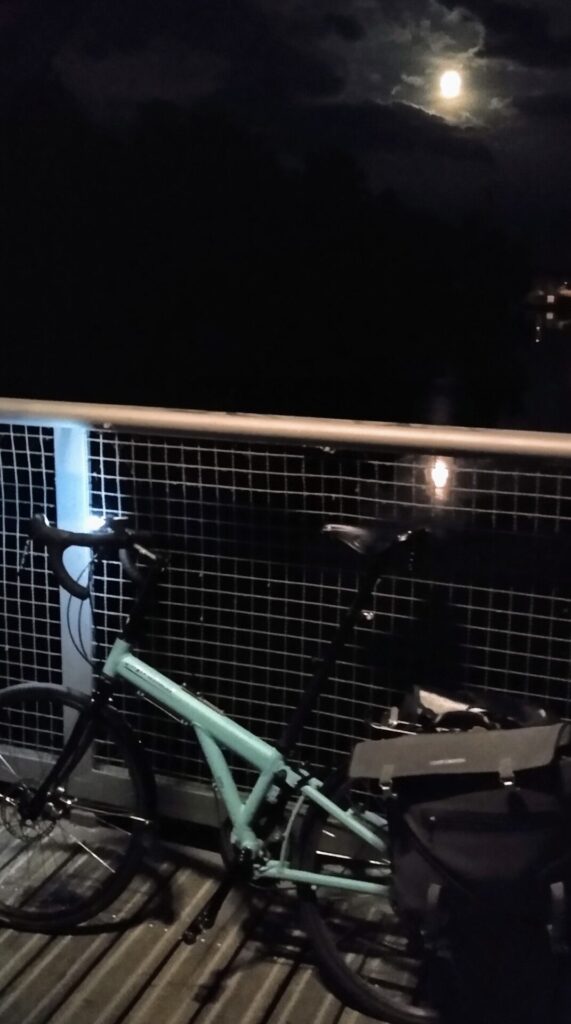
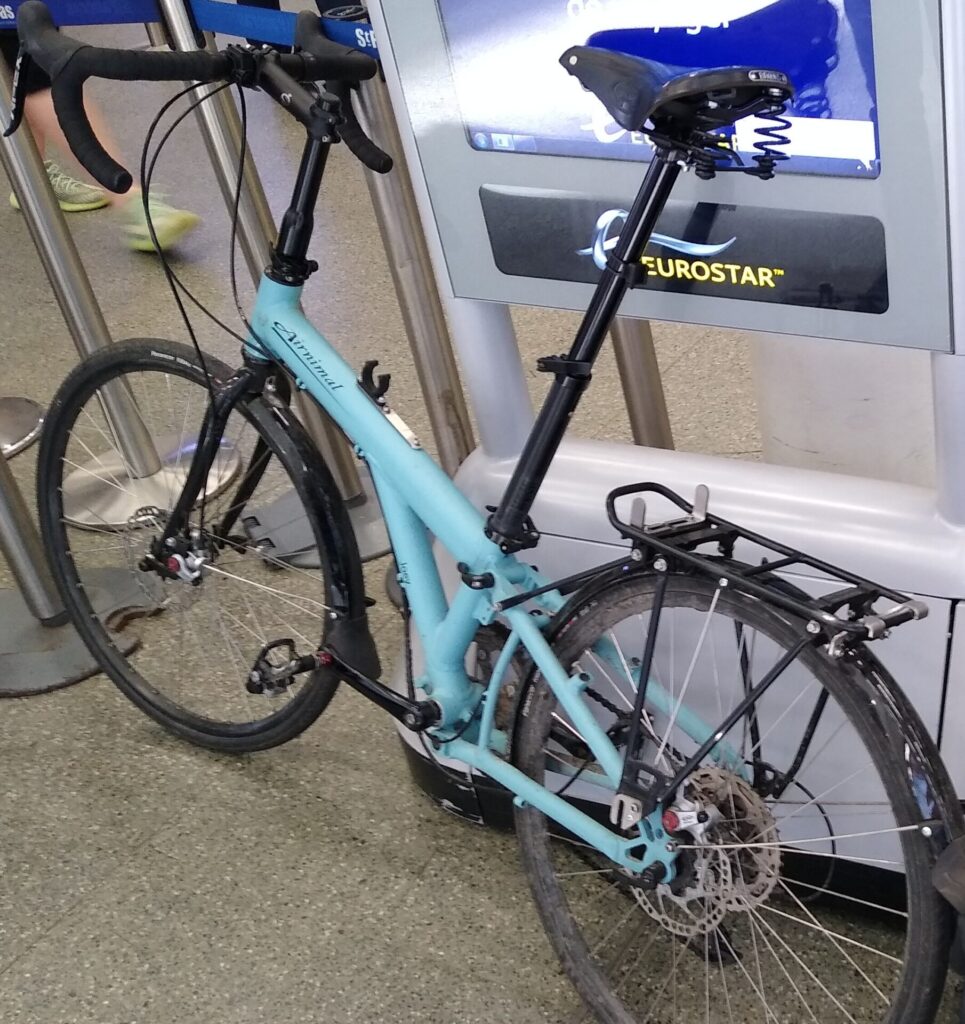
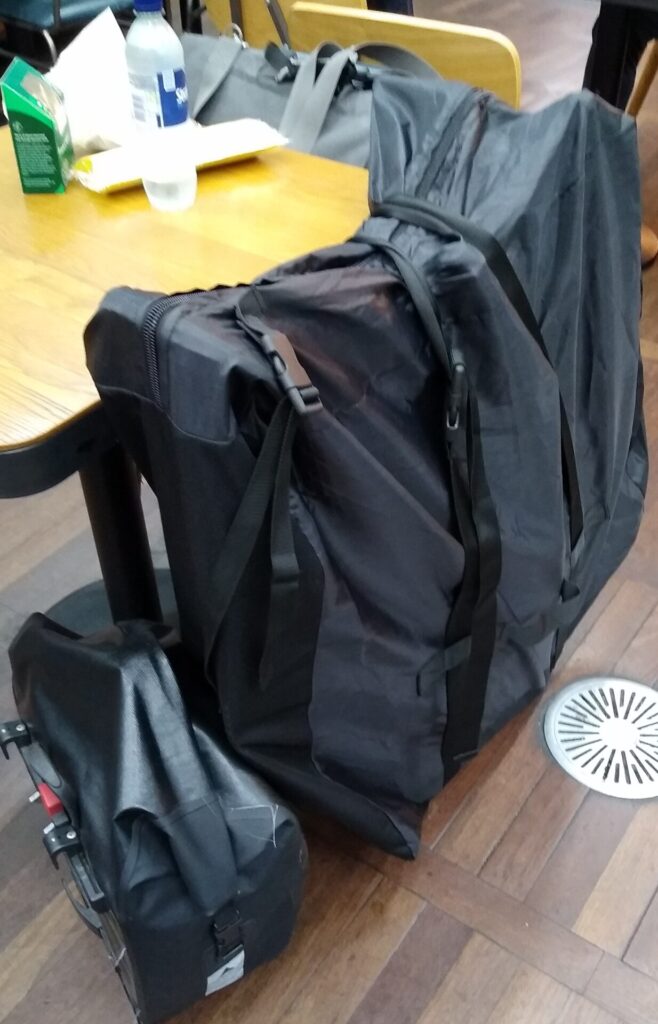
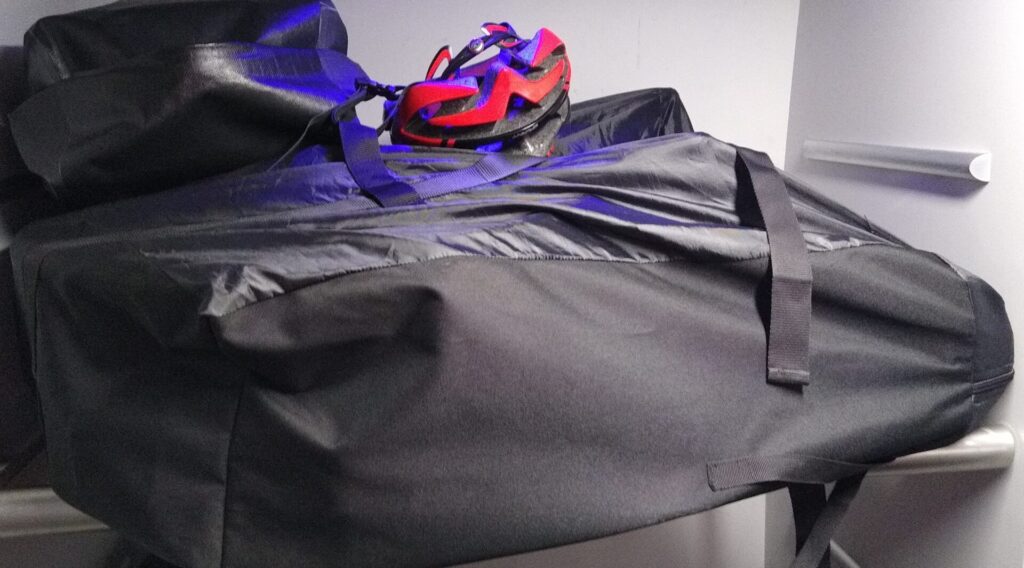

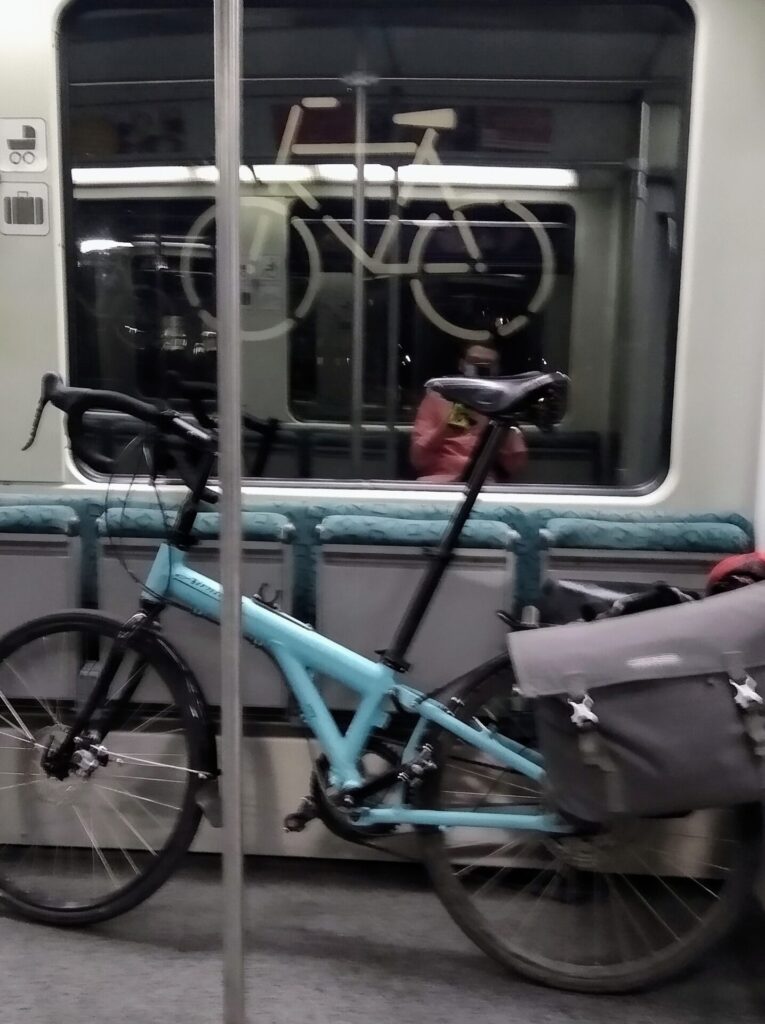
I do not have a folding bike, nor have I ever ridden one, nor have I ever been to Berlin. I am not qualified therefore to comment on most of this article. However I have, this summer, travelled by train in Germany (as well as France, Belgium, Austria, Denmark and Sweden) with bikes using an Interrail ticket so I think I am qualified to offer the following comments, written mainly from the point of view of someone who owns what I am calling a conventional bike, rather than a folding one:
– Eurostar is not taking any non-folding bikes at the moment so if you have a conventional bike, you have to go to Europe via ferry, e.g. London St Pancras to Dover, ferry to Calais, Calais to your destination. Whereas with Eurostar, you could be in Paris around lunchtime, it takes you until mid-evening under present conditions. Berlin would be out of the question. With Eurostar, you used to be able to get as far as Nice, Hamburg, even Turin, by nightfall. No doubt Patric would see this as another reason to use a folding bike, but he seems to use one for short trips to one destination (Berlin in his article) rather than for touring for several weeks.
– In addition to the Eurostar €30 seat reservation charge, there is also a similar additional charge to take a conventional bike when dismantled and placed in a bag.
– Seat reservation charges seriously undermine the value and viability of an Interrail ticket. A four-days-in-a-month Interrail ticket currently costs around £186.00 (i.e. unlimited travel in Europe on those 4 days for around £46.00 per day). If you want to get places fast, seat reservation charges are an inevitable additional expense and are charged on all TGVs in France and the quicker, ICE German trains. €20 charges are typical (not the €6 mentioned by Patric). Ostensibly the more trains you travel on, the better the value of an Interrail ticket, but not if you incur reservation fees of around €20 on each train.
– Reservation fees can be avoided in France by taking the slower, more local TER trains which have the benefit of generous spaces set aside for bikes or sometimes part of a whole carriage.
– Patric’s article gives the impression that German ICE trains commonly include ample space for bikes such as is illustrated in his photograph, but this is misleading. I disagree with Patric’s claim that ‘on all the other trains you will usually find plenty of space for your bike’; this applies generally only to local, slower trains with multiple stops, not to high speed trains of the ICE variety.
– There is space for (unbagged) bikes on German ICE trains, but this is generally limited. Furthermore these spaces must be booked in advance and in conjunction with the purchase of a ticket. Since the whole point of an Interrail ticket is to avoid the need to purchase a ticket, bike spaces cannot be reserved in advance with an Interrail ticket.
– ICE trains will not otherwise accept a conventional bike unless partly dismantled and placed in a bike bag. Even then you are left to fend for yourself with other passengers and their outsize luggage when finding space amongst luggage racks not designed for bikes. More often than not, you will find yourself having to leave your bike in a corridor or between carriages and arguing your case with the ticket inspector (who will usually back down if you are complying with the train company’s stipulations regarding bikes and bags). Anyone expecting to walk onto a German ICE train with a conventional bike intact will be quickly disabused of this notion by inspectors only to willing to throw you off at the next station.
Hi Graham,
Thanks for your detailed comments! Sounds like you didn’t quite have the experience you were hoping on your summer trip…
As you say, for long rail/bike trips I would indeed recommend a folding bike. There are folding bikes with good wheel sizes that work OK as touring/road-bikes when you get to your destination. I wouldn’t want to go touring on a Brompton personally, although I understand that some people do.
You are right, Eurostar doesn’t take non-folding bikes at the moment. One option, pointed out by Nick Potter is this to take a bus (www.eurotunnel.com/uk/travelling-with-us/vehicles/bicycles/), which costs about £35 at the moment, so similar to a Eurostar reservation. Although you have to get to Felixstowe and then carry on from Calais.
Regarding seat reservations, I agree that it can be an unpleasant surprise. But for the record, I don’t bleieve German trains require seat reservations on Interrail passes, according to the official app. I didn’t have any and had issue. Prices vary, but the Eurostar and Thalys (€27, Paris to Brussels) seem the most expensive. TGV is a bit cheaper, with all journeys I’ve checked costing €12. The €6 I mentioned were for German ICE, but not required as I said. As you point out, these reservations can be avoided by taking regional trains.
I wrote the article from the perspective of having a folding bike, including the comments about German trains. You are right, that standard bikes require bike tickets and reservations on German high-speed trains. This costs up to €9, but can get booked out. That said, I have only rarely seen people actually book these, and have never seen anyone get kicked off. That said, I would probably advise making a reservation, just to remove the stress factor. On slower trains there are no requirements.
I also believe that the German train company offer a bike-shipping service, which may be useful for you. But I’ve never used it, so not sure if it’s actually any good.
The upshot is: Folding bikes work pretty well with high-speed trains. Other bikes less so.
You should write up one of your trips for the website!
Best wishes,
Patric